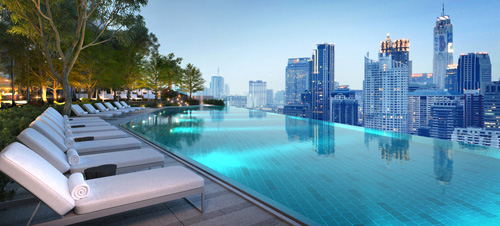Thailand is drumming up its upscale hotels and niche products as it puts on a new face for travellers with deep pockets and a taste for luxury. By Michael Sanderson

A new suite of luxury hotels and growing airlift to destinations such as Krabi and Samui are helping Thailand gear itself towards high-end travellers as ASEAN neighbours snap at its heels.
Park Hyatt Bangkok is opening 1Q2017, while recent openings and renovations in Chiang Mai and Phuket have ramped up the country’s tourism focus firmly on the high-end segment.
Exo Travel Group assistant marketing manager Amy Mayhew said the DMC was trying to push the Park Hyatt property, which will open above the upmarket Central Embassy mall in Bangkok’s downtown, with 222 rooms including 30 premier suites, in addition to three restaurants, four bars and a ballroom.
Another property on Exo’s radar is the 25-key River Arun on Bangkok’s Rattanakosin Island, the historic heart of the city. The ornate property sits in a neighbourhood of cafes and galleries near Wat Pho, Wat Arun and the Grand Palace.
Exo is also highlighting Chiang Mai’s Akyra Manor, Phuket’s Nai Harn and Keemala, and the Hloyo mud house in Mae Salong as part of its commitment to a sustainable future.
Meanwhile, the Tourism Authority of Thailand (TAT) is looking to reframe its marketing position from value-for-money to value-for-experience as it seeks to become a quality leisure destination.
Mayhew lauded TAT’s successful use of themed marketing campaigns in recent years, with the Bangkok-based Exo having participated in a project to develop marketing material to appeal to luxury travellers.
“This included shooting both a short- and long-length video at particular participating hotels and places,” she said. “The campaign was successful and it worked well for Exo Travel’s target on the high-end market. The luxury campaign also enabled Exo Travel to gain more exposure with luxury tour agents globally.”
Meanwhile, Asian Trails e-commerce and marketing manager Niels Steeman said it was important for the company to adapt to customers’ requirements.
“Overall, we see a movement towards more niche products for our core markets, and tours and excursions that fit the wishes of the customers, mainly (for) themed excursions like culinary, honeymoon, upmarket and/or wellness programmes.”
SI Tours founder and owner Sophida Tohsofee said Thailand could shoot for the same market Dubai was appealing to, but where the Middle Eastern megastructures might be a once-in-a-lifetime trip, the Land of Smiles benefitted from repeat business.
“I think our tourism is still the best in the world,” she opined. “In Thailand, we have the land, we have the food, we have everything.”
Bill Barnett, managing director of hospitality consultancy C9 Hotelworks, pointed to the resurgence of business travellers and the MICE sector after “some dark days in 2014” as a sign of the country’s strong position.
Barnett said resorts had rebounded, with improvements from the Eastern European and Russian markets. Phuket, in particular, recorded a growth rate in domestic and international passenger arrivals on par with Bali and well ahead of Hong Kong.
“It pushes back the message of how reliant we are on the China market, and that continues to be a fact,” Barnett said. “I looked at the Phuket figures and it wasn’t just the Chinese that were growing this year; we saw proportionate growth against all the markets of 19 per cent. So it’s not just a China story.”
As well, luxury destinations Samui and Krabi both recorded increased hotel occupancy as a result of greater airlift, according to C9 Hotelworks reports.
However, Barnett expects more low-tier hotels to emerge in Samui in the coming years and warned that Krabi could be betting too heavily on mass tourism.
“As nearby Phuket is learning, bigger is not necessarily better in the long run,” he remarked.
While tourism stakeholders anticipate more luxury tourists in Thailand’s future, neighbouring destinations are also competing for leisure travellers arriving in South-east Asia.
The competition could be getting stiffer as more flights now connect to Cambodia and Vietnam.
Barnett added: “We saw Vietnam bottom out a few years ago, but we’re seeing it rising now and becoming more of a competitive force to Thailand’s traditional leisure market.”
This article was first published in TTG Asia November 2016 issue. To read more, please view our digital edition or click here to subscribe.




















